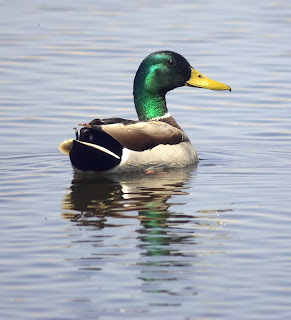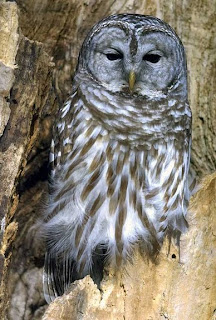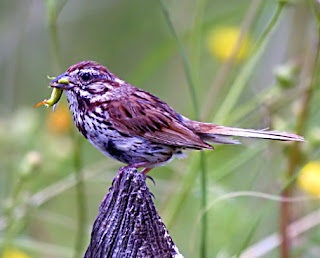Evolution of Displays
This is the work of Lorenz and Tinbergen. There is little evidence that most visual displays in birds are learned--they appear the first time the need arises. Furthermore, closely related species have similar displays that may have evolved from common and ordinary movements:
DUCK HEAD-TURNING DISPLAY. Some male ducks touch part of a wing with bill some touch speculum ( = display flag). Others nervously preen wing feathers ( = derived from displacement activity). Thus it seems that random displacement activity has become incorporated into a stereotyped part of the courtship ritual. Mallards raise wing, thus revealing speculum and attracts attention to it by preening. The Mandarin Duck, in the same display, merely touches one large feather; never preens, but it seems apparent that the Mandarin display is evolved from preening behavior.
DUCK HEAD-TURNING DISPLAY. Some male ducks touch part of a wing with bill some touch speculum ( = display flag). Others nervously preen wing feathers ( = derived from displacement activity). Thus it seems that random displacement activity has become incorporated into a stereotyped part of the courtship ritual. Mallards raise wing, thus revealing speculum and attracts attention to it by preening. The Mandarin Duck, in the same display, merely touches one large feather; never preens, but it seems apparent that the Mandarin display is evolved from preening behavior.
Mallard




Comments
Post a Comment